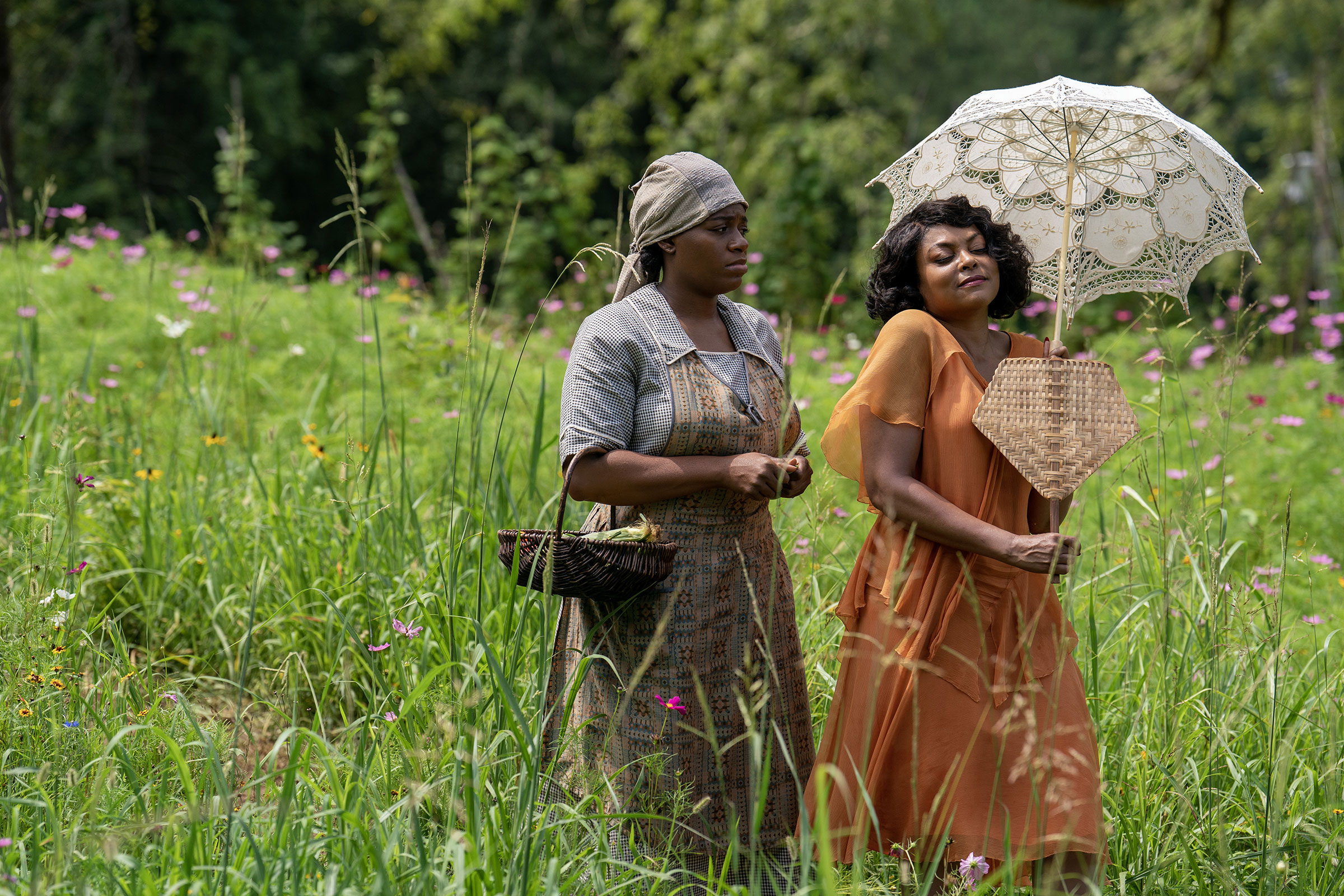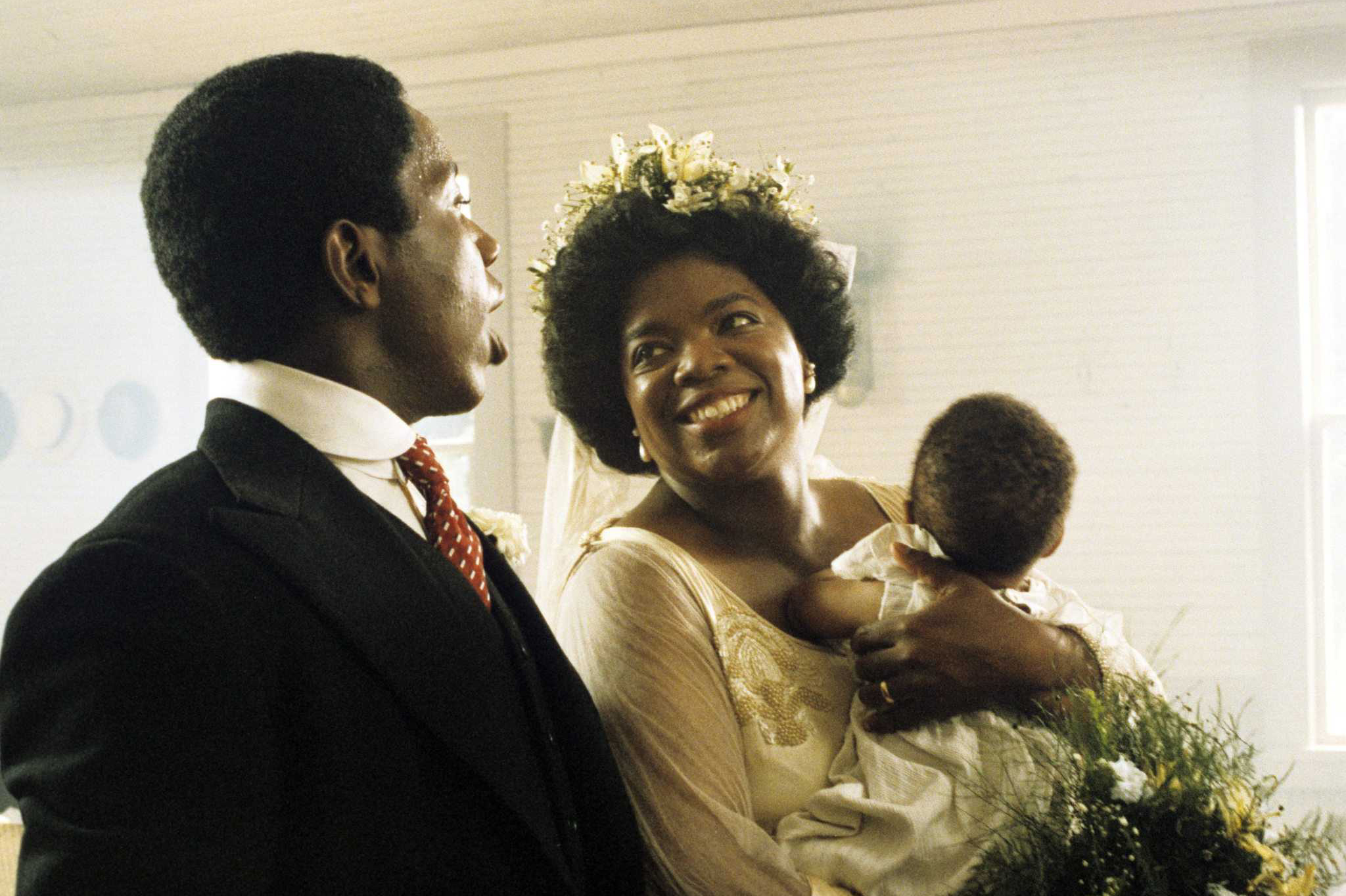
There’s a small but important nugget of movie history wrapped in the vibrant finery of Ghanaian director Blitz Bazawule’s movie version of the Broadway musical The Color Purple. Roughly midway through, two of the movie’s central characters—Fantasia Barrino’s Celie, an abused wife who’s slowly reclaiming her sense of self, and the woman she’s fallen for, Taraji P. Henson’s sultry Jazz Age juke-joint singer Shug Avery—drive from the country to a movie palace in the city. The feature they see there, advertised in lights, is The Flying Ace; splashed across its poster are the words “with an all-colored cast.” The Flying Ace, released in 1926 and directed by Richard E. Norman, is a real movie. It was part of what was known at the time as a race film: if America’s segregation and racism meant that Black citizens were largely shut out of Hollywood, African Americans would build their own world of sophisticated entertainment, creating spaces for their own performers to flourish. Some 100 years later, those spaces still need to be carved out, and that’s what Bazawule—along with a roster of producers including Oprah Winfrey, Quincy Jones, and Steven Spielberg—has done with The Color Purple. The movie is lively and fun, without betraying the heavy undertones of some of its subject matter. It’s a reclamation, but a buoyant rather than somber one.
The story, drawn from Alice Walker’s 1982 novel—which, before it was reimagined as a Tony Award–winning musical, had also been made into a movie by Steven Spielberg—begins in 1909 coastal Georgia, where two young sisters ought to be living carefree lives. But Celie (at this stage played by Phylicia Pearl Mpasi) and Nettie (Halle Bailey) are stuck living by the rules of their tyrant father (Deon Cole). Worst of all, he has raped Celie, impregnating her for the second time; he’ll take this new baby away, as he did the first, leaving the bereaved Celie to wonder if her lost children are alive or dead. He later marries Celie off to a local smoothie, Colman Domingo’s Mister, a huge male ego with a banjo attached. (He strums it with menacing charm.) Mister also abuses Celie, physically and emotionally; even worse, he separates the two close-knit sisters, a forced estrangement that will last for years. Celie—played as an adult by Fantasia—is good-natured and obedient, and she makes the best of her situation, but this is far from the life she deserves.
The rest of The Color Purple shows us how Celie slowly builds that better life for herself, her world made bigger over time by the people she meets. Her stepson Harpo (Corey Hawkins) brings a sassy bride into the fold: Sofia (Danielle Brooks) has big ideas about how women should be treated, and she walks out on Harpo when, following the lousy example set by his father—and taking advice that Celie herself gives him—he tries to control her by beating her. Sofia will come back into Celie’s life later, though her defiant spirit will also cause her to suffer unjustly at the hands of white people. But the person who will change Celie’s life the most—or who, rather, hands her the keys that allow her to change it herself—is Henson’s Shug, who purrs onto the scene in a splash of red sequins. There’s strife in this Color Purple, but suffering never rules the day.
Reimagining Walker’s novel, and Spielberg’s film version, as a musical was a stroke of genius, a way of steering the story out of trauma-porn territory and into a world of hope and celebration. This material—with music and lyrics by Brenda Russell, Allee Willis, and Stephen Bray, and a book by Marsha Norman—feels vibrant and alive, and Bazawule (who co-directed Beyoncé's 2020 visual album Black Is King) navigates it gracefully. Though many of the musical numbers are elaborate, they rarely feel overstuffed. An early number, “Mysterious Ways," celebrates the joy of gathering to worship on Sunday, the women strutting forth in creamy pastel dresses topped by fondant hats, the men high-stepping as their bright gold-and-yellow church robes whirl around them. When Mpasi’s Celie learns that at least one of her babies is alive, her happiness takes wing in “She Be Mine”—as she twirls and sings, she also takes her place in a workaday world represented by men swinging their hammers in unison on a chain gang, and women getting their laundry done against the backdrop of a rushing waterfall. It’s the little things, and sometimes the big things, that keep us going through it all. And Brooks’ Sofia, accompanied by a cadre of stomping women dancers with sturdy baskets tucked under their arms, leads one of the most rousing numbers, the mad-as-hell anthem “Hell No!”
The casting of The Color Purple gives Bazawule almost too much talent to work with: Jon Batiste shows up as a sleek hipster husband (and gets one of the movie’s biggest laughs with a perfectly timed one-liner). The hip-swinging Brooks may be the movie’s clear standout, but as the grown-up Celie, Fantasia is a watchful, affecting presence. Her scenes with Henson, in particular, have a sweet praline crackle. They get a big fantasy art deco dance number, rendered in satiny black-and-white that gives way to muted, marble-toned color. Dressed in coordinating beaded dresses—Shug’s is bridal white, Celie’s is tuxedo black, a stylish salt-and-pepper match—they profess their love for each other as they glide across a glossy dance floor, backed by a full orchestra dressed in celestial white suits.

This is a dream of what life should be, and this version of The Color Purple makes room for it even amid some harsh realities. Spielberg’s 1985 film—starring Whoopi Goldberg as Celie (she has a cameo in this version) and Oprah Winfrey as Sofia—has often been dismissed as an inadequate adaptation of Walker’s book. And he himself has said he was probably the wrong person to make it, though the film is fascinating in its own right: it’s as if Spielberg had hoped to use some of the techniques and trademarks of D.W. Griffith—the heightened emotional melodrama, the swirling snowstorms, the iris shots—to apologize for Griffith’s racist sins. But Bazawale’s Color Purple is the one that’s right for today. Its themes are straightforward: it’s about the importance of keeping your head held high, about the ways communities of women hold societies together, about the possibility and the power of redemption. It’s also a lavish spectacle, unapologetic in its joy, taking up space for itself without first asking permission. It's the promise of films like The Flying Ace, and others like it, finally coming to fruition. It only took 100 years.
More Must-Reads from TIME
- Cybersecurity Experts Are Sounding the Alarm on DOGE
- Meet the 2025 Women of the Year
- The Harsh Truth About Disability Inclusion
- Why Do More Young Adults Have Cancer?
- Colman Domingo Leads With Radical Love
- How to Get Better at Doing Things Alone
- Michelle Zauner Stares Down the Darkness
Contact us at letters@time.com



